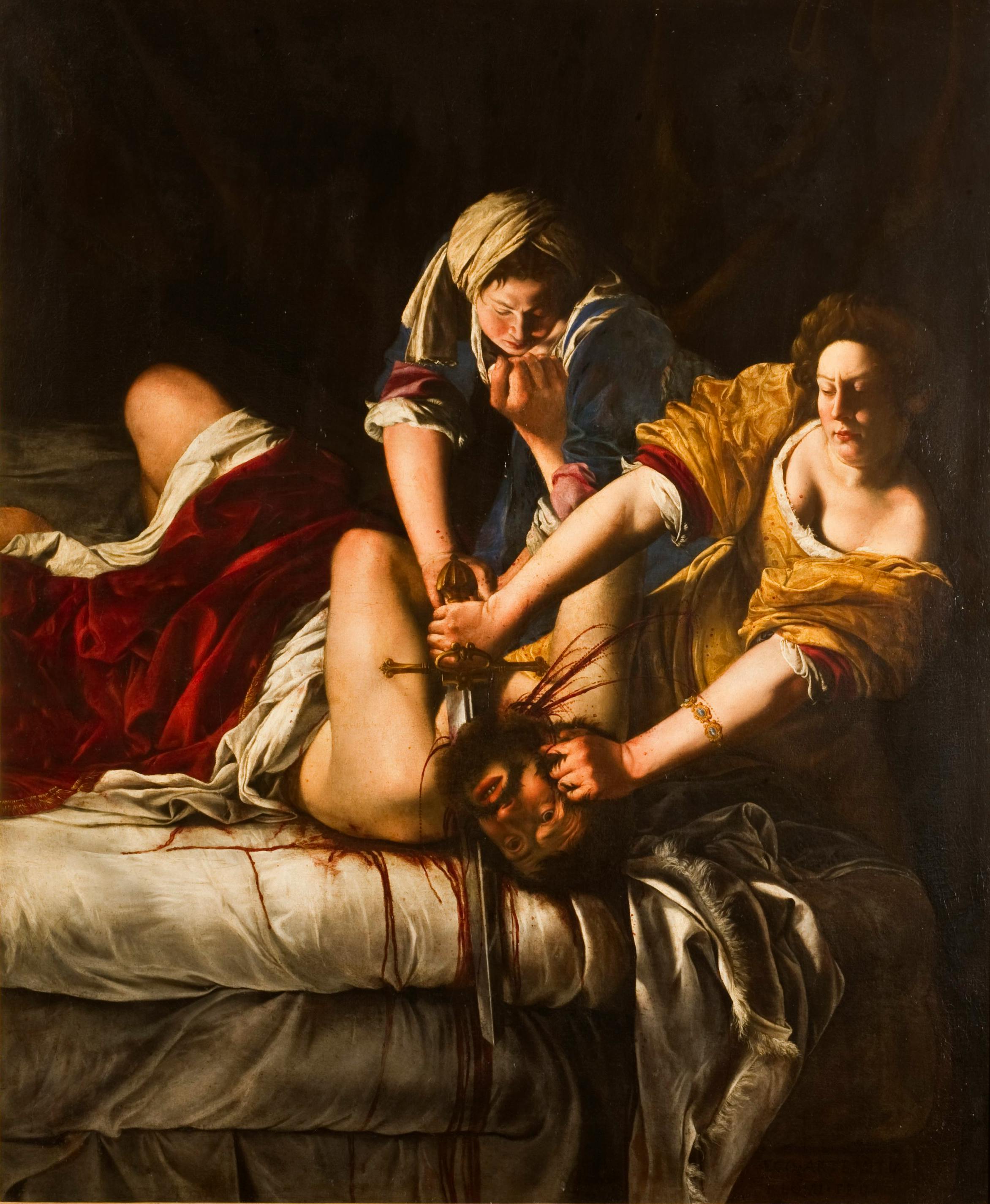Judith Beheading Holofernes
Artemisia Gentileschi (Rome 1593 - Naples 1652/53)
“The Lord has struck him down by the hand of a woman”. So says Judith, a young Jew from Bethulia, in the bible when she describes her heroic act that freed the people of Israel from the siege by Nebuchadnezzar's army. Judith went to the encampment of the fierce Holofernes, general of the enemy army, dressed in her best clothes and feigning a wish to forge an alliance. Struck by her beauty, the Assyrian general invited her to a lavish banquet in his tent. After eating and drinking, Holofernes, now drunk, fell asleep on his bed, allowing Judith to seize her chance to draw her scimitar and strike the deadly blow. In this powerful painting in the Gallery of the Statues and Paintings of the Uffizi, (c. 1620), Artemisia Gentileschi portrays the moment that Holofernes is killed by the hand of the determined and powerful Judith. The overall effect is both powerful and frightening: the drunk corpulent general is lying on the bed, his head grasped by his hair and the sword plunged into his neck. Furthermore, Artemisia did not shy away from adding the gory detail of blood spurting so profusely as to stain Judith's breast. The painting was completed in Rome where Artemisia returned after spending seven years in Florence and where she was able to appreciate Caravaggio's works once more. The naturalistic “virility” of the work provoked strong reactions on its arrival in Florence and the painting was denied the honor of being exhibited in the Gallery; in fact, it was only with great difficulty and the help of her friend Galileo Galilei that the painter managed to extract the payment, with a significant delay, that had been agreed with Grand Duke Cosimo II de’ Medici, who died in 1621 shortly after the great canvas was completed. Today, this painting also represents the human and professional tale of a woman who chose to be an artist in an era dominated by men; in this she succeeded, working in the courts of Rome, Florence and Naples, traveling to England and finally becoming the first woman to enter the Academy of Art and Design in Florence.
